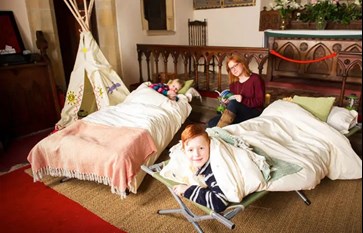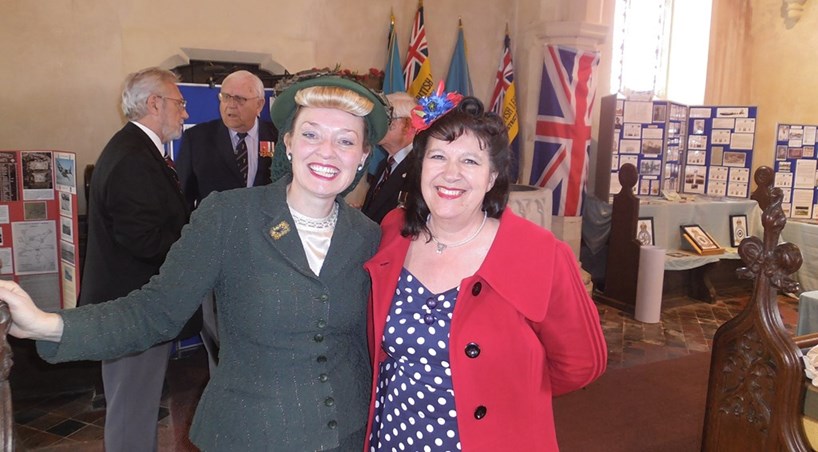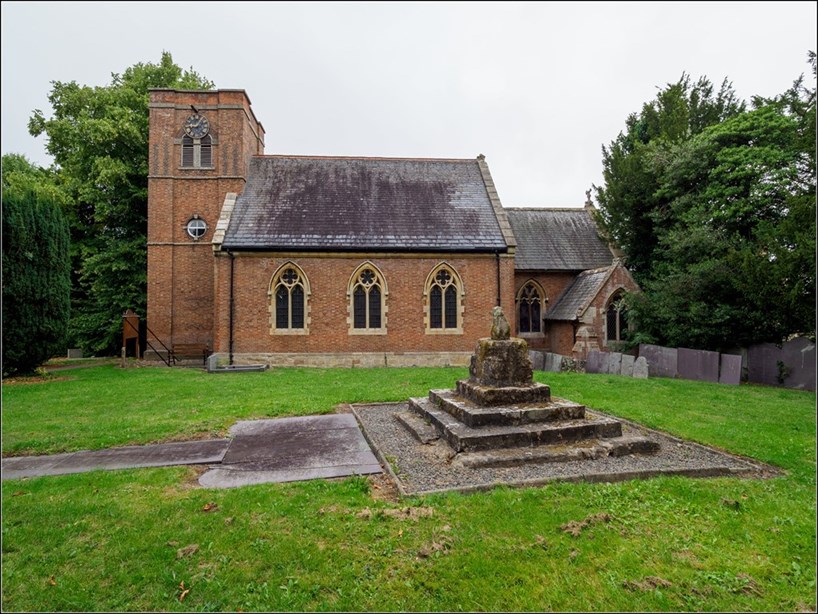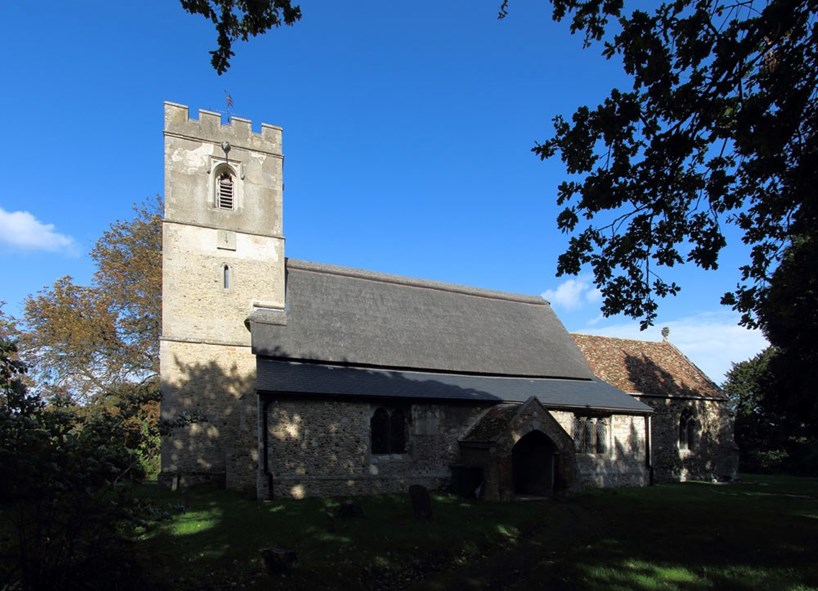IT IS deep in the countryside that you’re likely to to come across a festival church. In essence, it is a parish church that, in the face of potential closure, has re-imagined its worship and reset its management structures. It is no longer holding regular formal worship services, but putting all its energies into “doing less, but doing it better”.
Crucially, those energies do not come solely from the handful who: were regular attenders; who also comprised the PCC; who did everything for the building and felt burdened by the responsibility of it; who, as one cleric put it, “baked the cakes to sell to each other”.
The church holds a minimum of six “festival services” a year that meet the needs and rouses the interest of local people. Far from being the step on the road to closure that some imagined it would be, the designation proves, in many instances, to be an opening for new possibilities and a catalyst for a new kind of mission.
“It’s grown organically. They’ve become known by what they do and how they do it, and the impact they have,” the development officer for the Association of Festival Churches, Nigel Mills, says. “It came about because the whole business of maintaining either a regular, weekly service, or a monthly service was absorbing all the energy. Potentially, if they were given the freedom to think a little more about what the community needed, and what would serve them best, it would be a much better way of doing things.
“It’s meeting the community where they’re at, and saying ‘This church is as much your church as ours, as the worshipping community — how do we create a viable future?’ When people can see there’s a real possibility of closure unless they do something about it, it’s quite an emotive subject.”
ST MARY’s, Longsleddale, in Cumbria, is a small farming community in a beautiful valley location. Its regular congregation had dwindled to a number you could sometimes count on one hand; its PCC members were ground down by years of recycling the jobs between themselves; and there had been no candidates for churchwarden, said John Farmer, who formerly chaired the Friends group which became part of the new model. “It was absolute weariness. They had just run out of steam.”
Closure was on the horizon, although money hadn’t been a problem in this instance: “People will always put their hand in their pocket in this community, and it wasn’t long since we’d raised £40,000 to repair the church roof,” Mr Farmer said. “It just needed new blood to come in.”
 CCT/Longsleddale“Champing” at St Mary’s, Longsleddale
CCT/Longsleddale“Champing” at St Mary’s, Longsleddale
The PCC stepped down, and nothing happened at the church for 12 months. But then friendships formed among people who did not necessarily go to church but wanted to look after it. Its PCC merged with a neighbouring church half an hour’s distance away, ensuring that formal responsibilities were attended to; a churchwarden came forward; and people in the community used their business skills to devise a package of care that would work well for the whole community. More than 90 per cent of the households now make a financial contribution to the church building.
The bigger services — Christmas, Easter, Remembrance, Harvest — attract more people, who make more effort to come. And, while the pressures on Festival Churches are acknowledged still to be quite large — they have to meet financial obligations of insurance, heating, lighting, parish share and maintenance — “what we’re finding is that with more people involved, there are more people able to do the planning and looking at how they fund-raise within any community,” Mr Mills says.
“And, because it remains a parish church, your avenues into places like the Lottery or the National Churches remain open, but you’ve got firmer foundations to apply because they’ve got a clearer vision as to what it is that you’re trying to do and where you stand.” Some have also reached out to the diaspora, he observes, engaging those people who no longer live in the area, but still feel connected to the church.
Mr Farmer reflects: “The best thing that happened to the church was the genuine threat of closure. We’d have just stumbled into it. There’s a decent turnout now to all the festival services, and it’s generated a lot of enthusiasm within the community.”
The church now offers “champing” (overnight camping in a church building), which has netted £19,000, and attracted the attention of the documentary maker Simon Reeve. He spent the night here as part of a BBC documentary, and acknowledged that, although he did not describe himself as religious, he had found it hard not to be affected by the spiritual feeling of the place.
The mission to extend the use of the church has attracted an associated Christian group in the area, who now also come here once a month. “We need to get our story out more,” Mr Mills says, “because this isn’t just about saving the building. It’s about mission.”
Mr Farmer concludes: “It’s got to be one of the answers to stop the decline of these small, beautiful rural churches. They’re really loved.”
THE seeds for festival churches were sown a decade ago, in the recommendations of a comprehensive review from the Church Buildings Council (CBC) in 2015 on how the Church of England managed its 16,000 church buildings. It was chaired by the then Bishop of Worcester, the Rt Revd John Inge, who described them as “a visible sign of ongoing Christian faith in communities throughout England as well as being an unparalleled part of our country’s heritage.”
The review was intended to be a catalyst for discussion about how churches could be better cared for and used for the common good. It recommended changing Canon B 14A to facilitate festival churches, and suggested the setting up of an Association of Festival Churches, now chaired by Sir Tony Baldry, who was then chairman of the CBC and Second Church Estates Commissioner.
The review, part of the wider Reform and Renewal strategy, also recommended amending the Parochial Church Councils (Powers) Measure to enable a PCC, with diocesan consent, to transfer its care and maintenance liability to another body. Regardless of whether they were worshippers or not, anybody with an interest in the building could now play an active part in the care and management of a Festival Church.
The diocese of Ely was among the first to set about reimagining historic church buildings as community assets for the common good. The head of church buildings in the diocese, Geoffrey Hunter, was part of those discussions and the innovative research programme project REACH Ely, which ran from 2018 to 2022. Traditionally, churches that could no longer sustain regular Anglican worship had no option but to move towards closure, but the research confirmed the need for the new model of shared governance that had been enabled.
“The rules about how churches are governed are actually more flexible than people think,” Mr Hunter says, acknowledging the complexities that were implicit in leasing to a trust, forming a separate registered charity, or becoming a “chapel of ease”, which were traditionally the only alternatives to closure as a parish church.
A PCC can now devise its own constitution, with the approval of the diocesan Bishop’s Council. Changes to the representation rules removed the requirement for PCC members to be communicant members of the church, which essentially opened membership to anyone in the community. The ancient requirement for a church to have a service every week has also been removed: something that Mr Hunter describes as simply catching up with the reality of patterns of worship in ever-larger benefices.
“It’s a different way of being a parish church,” he says. “We do want to get the word out there. The word ‘festival’ in some people’s minds is limited to the [Church] festivals of Christmas and Easter. We want to look out for other things as well. The whole point about festivals is that they are occasional, and what could be occasional differs from place to place and what local traditions are. There’s all sorts of things that festival services can be.”
Interacting not just with church-people but with the entire community provides a critical opportunity for the church to engage with them and remind them of the deep purpose of the building: “If they never come through the door, and don’t get involved, we don’t have that opportunity. It boils down to doing things which are more attractive to a wider audience,” he says.
Bishop Inge suggested in a book that followed the review, A Christian Theology of Place, that church buildings gave a sense of stability, “and also the sense that the Christian faith has inspired people to build these extraordinary buildings”.
The Rural Dean of Ingworth and Sparham in the diocese of Norwich, the Revd Andrew Whitehead, could certainly attest to that. He is is Team Vicar licensed to 17 parishes, nine of which are under his direct responsibility, and among which are three redundant churches in the care of the Churches Conservation Trust.
 © Chris ManderHeritage day at St Peter’s Church, Haveringland
© Chris ManderHeritage day at St Peter’s Church, Haveringland
No diocese has a greater concentration of medieval churches than Norwich. When Mr Whitehead arrived at St Peter’s, Haveringland, in 2015, the church — which had no water, no heating, and limited electricity — had not had any regular worship for some time, and was down to one monthly service in the summer. It was likely to be leased to the Diocesan Churches Trust.
“My Team Rector, Andrew Beane, had read about festival churches, and we thought we’d give it a go,” he remembers. “We were coming from a complete standing start, and that was an advantage, really: there was no inheritance.” He was able to speak at a well-attended parish meeting convened to discuss a local planning issue. The level of interest shown led to the formation of the Haveringland Church Action Group (CAG), which, ultimately, became a sub-committee of the PCC.
The church sits in a field adjacent to the RAF Swannington airfield, a remnant of the Second World War. The village, a community of about 150 people, has no pub, no shop, and no public buildings, so there was considerable interest in the church building as a place to bring people together. “The first service we did was a Harvest Festival. We did it outdoors, with tractors and a crop sprayer and children’s activities, and over 100 people came to this church in the middle of nowhere,” he remembers. The level of engagement was replicated in other initiatives, along with early identification of the potential of a residential park visible from the church.
“We don’t have much hope of bringing in young people to our church, because there aren’t that many in the parish,” he acknowledges. “But we have quite a large concentration of people in retirement, who’ve come to the countryside to seek some peace and refreshment in their later years.
“We needed to reach out there, and we also identified that there was a looser, less physically grounded community around the airfield, which has an active veterans and families association. We’ve made a really concerted effort reach into that community, which is actually worldwide. Every year, we have a reunion where we fill the church and honour the memory of all the people who served at the airfield when it was in operation.”
The festival model is not a one-size-fits-all, he emphasises. “I don’t have any illusion that the model we’re employing here will work everywhere. When you look at rural Norfolk, it’s a way of regularising what’s already happening in lots of churches. They’re each unique, and every one has different potential. But where there isn’t much in the village, and if the church is willing to flex and re-invent itself for a new generation, it can be thrust right back into the centre.
“We do connect to the people in the traditional way through the Festival services, but really what it’s more about is making those relationships, and helping people to feel that it is their church — that they’ve got a stake in making its success and making it viable.”
That does take effort, he says, and, as Rural Dean, he also has to look at it from a financial point of view in terms of clergy resource. The small PCC meets the minimum number of times in the year that is necessary, and the Friends group concentrates on the logistics and the fund-raising side of things. “It’s a work in progress, as always, but the key is all about getting a team of people involved.”
The church has managed to attract £300,000 of funding from the National Lottery, and a further £200,000 from 25 other grant-making bodies, including local charities and Broadland Council. The money has enabled it to put in a lavatory, kitchen facilities, heating, lighting, and a sound system, plus an electronic locking system (monitored by CCTV) which locks the door automatically in the evening and opens it again in the morning. Consequently, the church is getting more visitors.
“It’s almost a story of the phoenix from the ashes,” he suggests. “It’s been a revelation. We’re hoping through the wide range of activities we can now offer that people will start to see it much more as their church than they have in the past.”
FESTIVAL churches now number at least 200: a figure that Nigel Mills believes could increase five-fold over the next four or five years. Leicester diocese has successfully run a pilot at St Mary’s, Walton-le-Wolds, exploring how the festival church model can work alongside other ways of being church. Worship here, in 2021, had dwindled to two services a month, with an average congregation of seven, including the minister and organist.
Energy and enthusiasm from local people, and a high degree of local ownership of the building, combined with good attendance at the eight festival services a year — linked to major festivals and to a community event — has had a rejuvenating effect.
 Phil McIverSt Mary’s, Walton-le-Wolds
Phil McIverSt Mary’s, Walton-le-Wolds
Congregations now range between 36 and 55 in number, with a significant number of children attending and assisting in leading worship; and attendance at other churches in the group is promoted in the village. Giving is reported to have increased significantly, with many of the local community contributing, which means that the church finances are stable. There are hopes of reordering in the future to increase community space.
Leicester diocese, which is working towards every parish being part of a Minster Community by the end of 2026, put out a range of resources in April to help parishes interested in exploring the festival model. In a theological reflection, it suggests, “The move towards the festival church model is seen within the context of everything having its season. Rather than a mothballing or slow closure, this is a positive step towards a next season in the life of the church; an opportunity to explore a new future season for the church in this place.
“As Ecclesiastes reminds us, God makes ‘everything suitable for its time’ and the DCC/PCC can explore moving to becoming a festival church with the sense of how God has put a sense of past and future into their minds.’”
 John SalmonAll Saints’, Rampton, near Cambridge
John SalmonAll Saints’, Rampton, near Cambridge
Case studies from the Association of Festival Churches include All Saints’, Rampton, near Cambridge, where a festival church was enabled by forming a Rampton Church Action Group from three or four existing church members and others from the community with particular skills. It is constituted as a sub-committee of the Cottenham with Rampton PCC, and works with the Friends group, which raises the funds.
Attendance at St Luke’s, Snailbeach, close to the Stiperstones Mountains in South Shropshire, has risen from an average of 40 per year to 265 per year. There are plans to increase the number of services beyond the five agreed as easily deliverable by local people — Mothering Sunday, Easter, Remembrance, Christmas and Carols, and Stiperstones Festival Day — and to explore adding additional facilities to the church if the number of people attending continues to grow.
“There’s nothing so desolate as a closed church,” suggests Sir Tony Baldry, who chairs the Association of Festival Churches. “Every parish church in England is different, and the makeup up of the local community is different. They are sacred spaces, places of pilgrimage, repositories of social history in the place where they’re relocated. Involving the wider community in what happens to them is vital.”
Things had undoubtedly changed from George Orwell’s picture of England, famously quoted by Sir John Major, as “old maids bicycling to holy communion through the morning mist”, Sir Tony said. In practice, the Church of England’s commitment to being a presence in every community had meant ever-larger benefices and clergy managing an ever-increasing number of churches.
“Whatever happens to patterns of worship, we are going to be left with this challenge that the C of E is responsible for hundreds and hundreds of church buildings which have been used for over 1000 years, in parts of the country which don’t have the greatest population,” he said. He concluded: “I think when people understand the festival church model, they will want to try and adopt it so their church remains open.”
More information about the Association of Festival Churches can be found at festivalchurches.org.uk
















